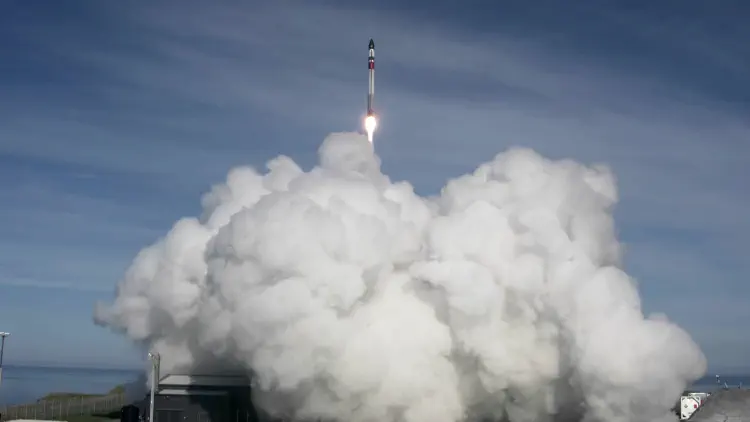They Did It! Rocket Lab Uses Copter to Catch (and Release) a Rocket
Rocket Lab has just joined SpaceX in the club of space companies that can launch an orbital-class rocket booster and bring it back alive.
In a sense, the California-based company one-upped SpaceX by having a helicopter snag the first-stage booster of its Electron rocket with a cable and a hook as it floated past on the end of a parachute, 6,500 feet above the Pacific Ocean.
So what if the pilots of the customized Sikorsky S-92 helicopter had to release the booster moments later, due to concerns about the way their load was behaving as it swung from the hook?
“Incredible catch by the recovery team, can’t begin to explain how hard that catch was and that the pilots got it,” Rocket Lab CEO Peter Beck said in a post-recovery tweet. “They did release it after hookup, as they were not happy with the way it was flying, but no big deal, the rocket splashed down safely.”
Rocket Lab said the booster was plucked out of the Pacific off the coast of New Zealand by a recovery ship, and will be brought back to the company’s rocket factory for examination.
“From here we’ll assess the stage and determine what changes we might want to make to the system and procedures for the next helicopter catch and eventual re-flight,” Beck said in a news release.
The catch-and-release maneuver is part of Rocket Lab’s drive to catch up with SpaceX when it comes to rocket reusability. “This is a monumental step forward in our program to make Electron a reusable launch vehicle,” Murielle Baker, senior communications adviser for Rocket Lab, said during the mission webcast.
Baker said the booster appeared to be in “great condition,” even though it took a splash into the saltwater instead of an aerial ride to the recovery ship’s deck.
This is what it looked like from the front seats. pic.twitter.com/AwZfuWjwQD
— Peter Beck (@Peter_J_Beck) May 3, 2022
The fact that the two-stage Electron rocket successfully put 34 satellites into low Earth orbit almost got lost amid the helicopter hubbub. Liftoff from Rocket Lab’s launch pad on New Zealand’s Mahia Peninsula took place at 10:49 a.m. local time May 3 (10:49 p.m. GMT May 2).
Launch customers included Alba Orbital, Astrix Astronautics, Aurora Propulsion Technologies, Spaceflight Inc. and Unseenlabs. It was the 50th mission for Seattle-based Spaceflight, which makes arrangements with Rocket Lab and other launch providers to fly satellites as piggyback payloads.
A successful satellite launch was the prime objective for Rocket Lab’s 26th Electron mission, known as “There and Back Again.” That whimsical nickname worked in a nod to the subtitle of J.R.R. Tolkien’s “The Hobbit” (the subject of movies filmed in New Zealand) as well as a reference to Rocket Lab’s reusability campaign.
When Rocket Lab first started launching the low-cost Electron in 2017, the rocket wasn’t meant to be reusable. But as time went on, Beck and other executives saw more value in reusability as a way to reduce the cost of access to space.
Now the company is working on a bigger launch vehicle, known as the Neutron, which is designed to make a propulsive return to its launch site. That closely follows the reusability routine that SpaceX has demonstrated with its Falcon and Starship rockets, and that Blue Origin is using for its New Shepard suborbital booster as well as its future orbital-class New Glenn rockets.
Lead image: Rocket Lab’s Electron rocket rises from its New Zealand launch pad. Credit: Rocket Lab via Twitter.
This article appeared on Universe Today and has been published here with permission.

